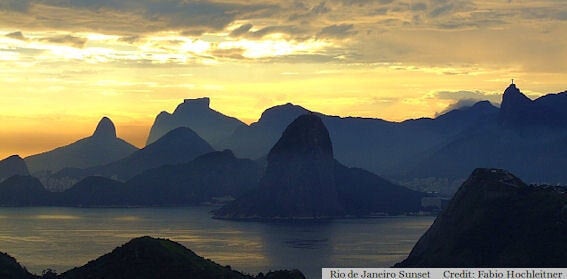More of a continent than a country, the sheer scale of Brazil is mind boggling. Cast your eyes over the vast territory and you'll see it is home to 60% of the biggest rainforest on Earth, includes a river wider than the English Channel and that 17 of its cities have a population of over 1 million. Fitting then that two of the world's biggest sporting events, the current World Cup and the 2016 Olympic Games, are being played out across this vast nation.

Unfortunately though, this country's vast size is also played out in its contrasts, some of which are easier to spot than others; the disparity between rich and poor is staggering, even though the physical distance between them is sometimes mere metres, its favelas are some of the most dangerous places to live in the world, yet home to its vibrant Samba Schools, environmental destruction is on a staggering scale, with over 750,000 km2 (over three times the size of the UK) of rainforest lost since 1970, and yet it is still the best place in the world to see the rare and elusive jaguars. Travel here then requires an understanding of these contrasts, so that we can make sure our visit benefits the people, and environments, which need it most.
Delving deeper into Brazil
The size of Brazil means you don't have to look hard to find responsible, authentic experiences away from all inclusive high-rise hotels and cavernous cruise ships. The North-East's Chapada Diamantina, a vast, relatively undiscovered region of mountains, crystal clear rivers, waterfalls and caverns, boasts some of the country's best hiking trails, Cadomblé celebrations, found mainly in Salvador, offer an insight into traditional Afro-Brazilian beliefs, and just west of Rio, lies a whole host of overlooked delights, including the Costa Verde and its lush mountains, fishing villages and idyllic islands.
If we do choose to connect more deeply with the people, culture, places and environments of Brazil, and to really appreciate the vibrancy of this nation I wholeheartedly recommend this, then a greater responsibility falls upon us to ensure that our travels respect the privilege of this closer connection. In other words it requires research into, and an understanding of the complex interplay of conservation and destruction, luxury and poverty, history and modernity.
Flying past the problem
A case in point is the ongoing deforestation of the Brazilian Amazon. The scale of the destruction is incomprehensible. But, unlike Borneo, where the vast tracts of palm oil plantations greet tourists before they are driven into the forest itself, Brazil's huge size often means a flight into the centre of the forest is the only way to arrive into the Amazon and it is easy to miss evidence of the ever creeping tide of destruction, however, take the opportunity to peer out of your window on a daytime flight and it's a different story. Guy Marks from Responsibletravel.com member Tribes Travel says "If you fly into Manaus during the daytime, you get to the edge of the forest and you just see hundreds of miles of forest burning. There's a very distinct line between the soya fields and the forest - and the line is moving on a daily basis. So it's fairly staggering."
Finding the value in responsible tourism
Seeing this destruction first hand highlights the need for tourism which values the rainforest and contributes towards its conservation. Visit and enjoy Brazil's National Parks and don't resent the entry fee - this demonstrates money can be made from keeping the forests alive. I also recommend steering clear of the large cruise ships ploughing the major arteries of the Amazon, which contribute little to rainforest communities or conservation. Instead stay in local villages and take tours with local guides, showing the value there is in preserving their small part of the forest. You won't be able to visit many of Brazil's fascinating indigenous tribes - most have remained as they are precisely because they don't want to be involved with the outside world - but you can contribute to their protection by using your travels to protect their forest home. Make time in Rio to visit the Museo do Indio in Botafago, run by FUNAI, the national Indian Foundation responsible for monitoring and protecting indigenous territories and preventing the invasion of land by outsiders. The museum offers a unique insight into Brazil's different tribes, putting a story and incentive behind your efforts to travel responsibly, and proceeds will support the organisation's ongoing work.
Despite the huge scale of the problems it faces, Brazil is taking great steps in eco-tourism. Bonito, near the southern Pantanal, for example won the World Responsible Tourism Award for Best Destination in 2013 for its innovative approach to environmental protection. Once the attention of the world turns away from Brazil and the problems it faces again disappear from the media spotlight, it will be left to us as tourists to make the effort to learn about, visit and support these places, to demonstrate the value in sustainable tourism and to encourage other areas to do the same.
Find out more about how to ensure your visit to Brazil has a lasting positive impact at http://www.responsibletravel.com/holidays/brazil.
Photo credit: Fabio Hochleitner